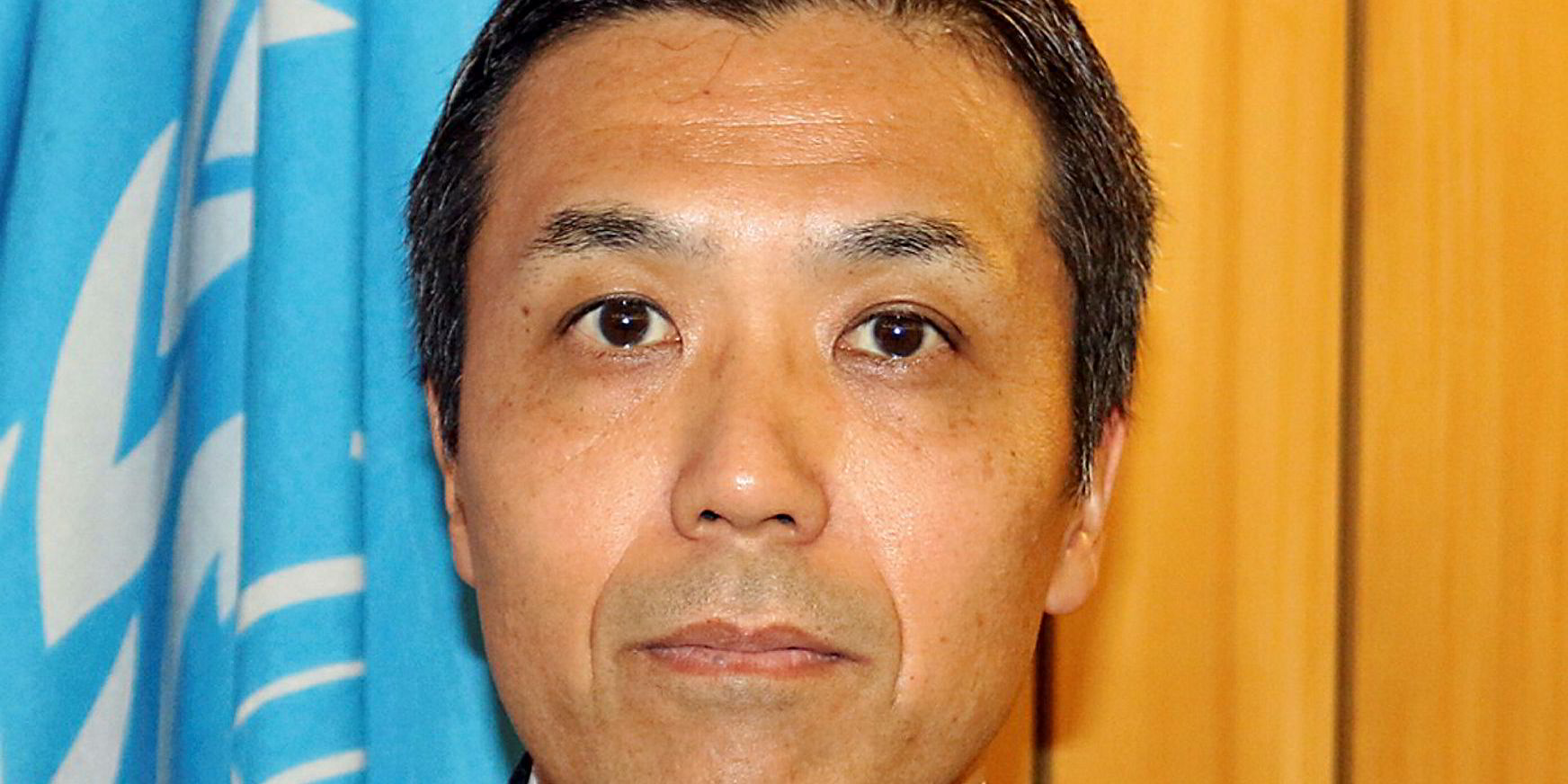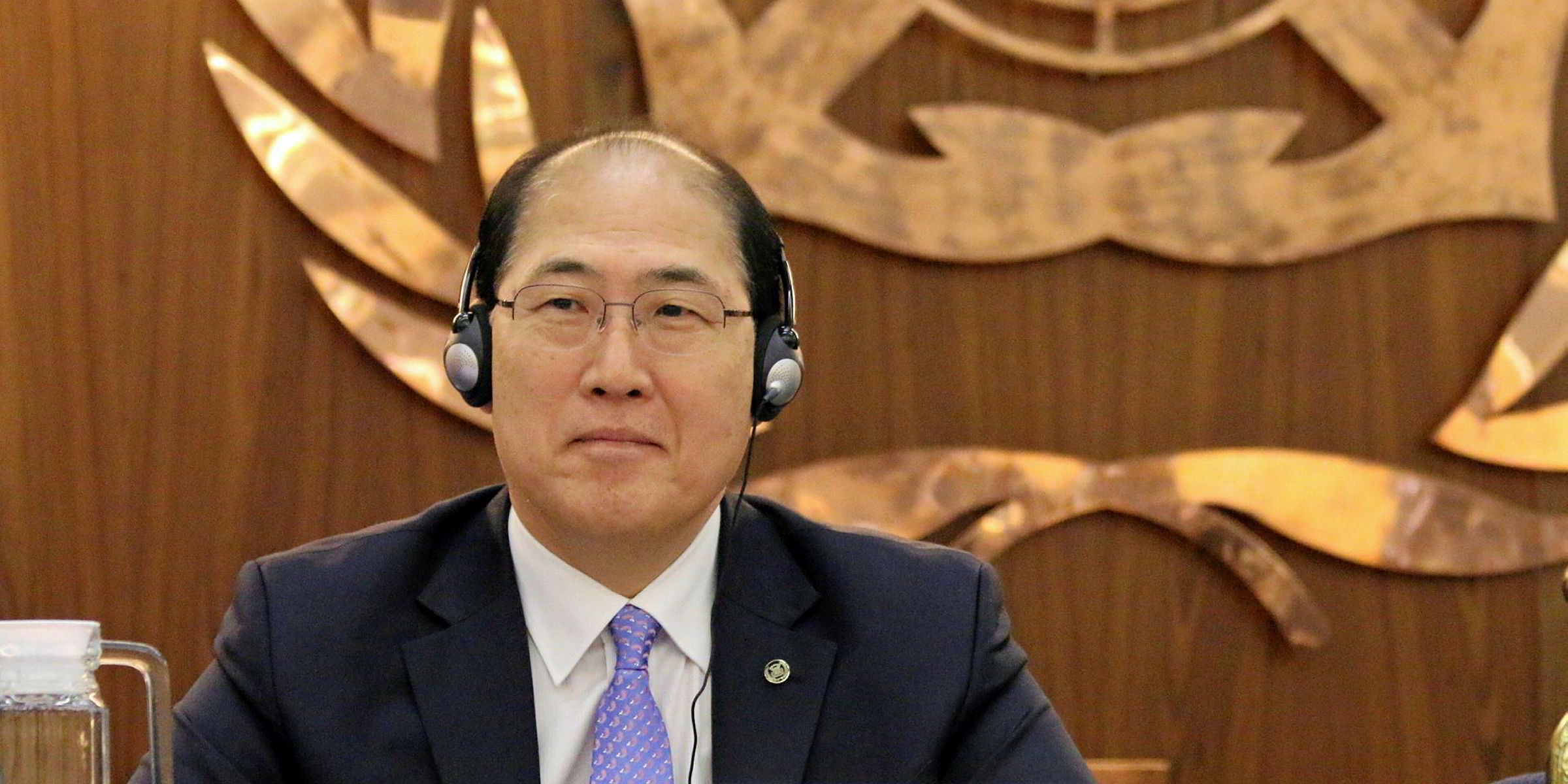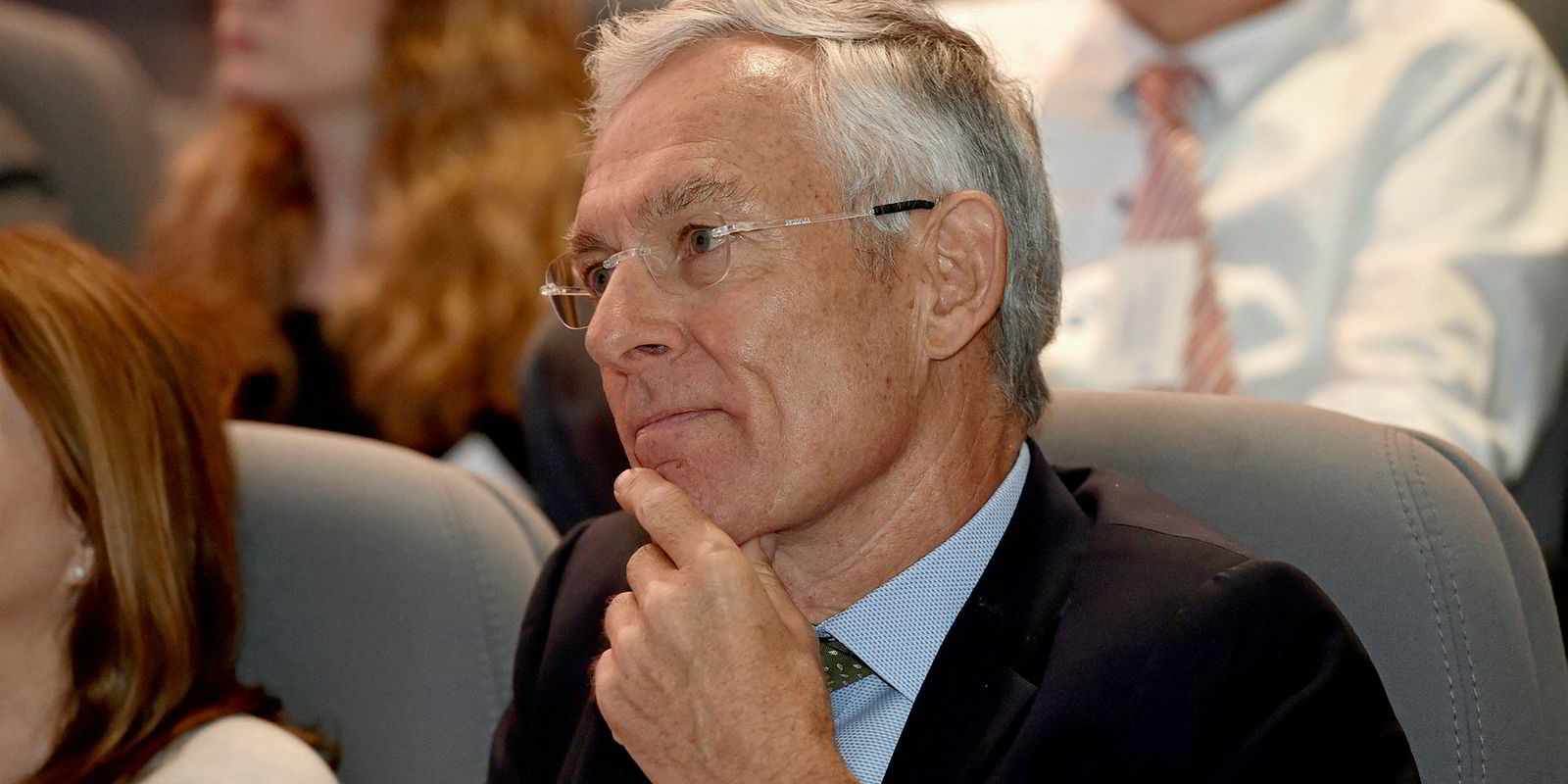The future shape of low-carbon shipping looks set to be determined in the next two weeks.
Governments are poised to throw down a challenge to the industry to slash its emissions. The targets and aspirations to be laid down by the IMO in a series of meetings in London will have far-reaching implications for the way shipping operates.
From Tuesday next week, a preliminary meeting of experts will draw up targets and measures. The plan is that the following week these will be approved by governments at the Marine Environment Protection Committee (MEPC) 72 meeting under the chairmanship of Japan’s Hideaki Saito.
Here, TradeWinds examines the agenda for this new age of low-carbon shipping and analyses what might come out of the meetings.
What is behind the drive to cut shipping's CO2 emissions?
The industry was excluded from the Paris climate agreement because governments agreed its carbon reduction measures should be entrusted to the IMO and its member nations.
IMO secretary general Kitack Lim has promised that shipping will contribute its fair share to the Paris accord. However, his organisation has been criticised for its slow response, and the threat of regional regulation looms over the industry if it does not act quickly.
Most concerning to shipowners is the prospect that if the IMO does not come up with a series of substantial carbon reduction targets, the European Union will respond by including shipping in its Emissions Trading Scheme.
What does the IMO hope to achieve at the MEPC meeting?
First, the IMO wants to come up with a “vision” that will describe what it believes a low-carbon industry of the future will look like.
Then it plans to define a “level of ambition” in which it outlines possible emission reduction targets in the short, medium and long term.
It also aims to draw up “guiding principles” on whether the targets will be mandatory or aspirational, and whether they will apply to developing nations. The targets are likely to be aspirational because the process of seeking to mandate global targets in an existing or a new convention is likely to prove too drawn-out and complicated.
Then the IMO will draw up short, medium and long-term measures, and assess their impacts on member states. It will recommend projects to support the industry, including research and development programmes.
What is the likely outcome?
The IMO wants to demonstrate that shipping is contributing its fair (and realistic) share towards achieving the Paris targets.
Of the proposals on the table, the most extreme is from Pacific island nations already affected by climate change, including the Marshall Islands, which are calling for zero carbon emissions by 2035.

Belgium wants a 90% improvement in ship efficiency and a 70% reduction in emission volumes by 2050.
Then there are the compromise proposals. One from Japan calls for a 40% improvement in ship efficiency by 2030 and a halving of carbon emissions by 2060.
The International Chamber of Shipping is advocating a 50% reduction in emissions per tonne kilometre by 2050 and negotiations on cutting the total volume of emissions by 2050.
All these targets use 2008, the peak year for shipping emissions, as the baseline.
What will be the main carbon-cutting measures?
Most likely there will be an increase in the mandatory ship efficiency targets for newbuildings and an attempt to improve onboard operational efficiency.
More controversially, to chalk up immediate cuts in emissions, there is a proposal for a global speed limit for ships. However, most observers rate this as unlikely to be adopted because of complaints from developing countries that fear economic isolation, and because of difficulties in policing compliance.
The idea of a tax on fuel to fund research and development has been floated, with little progress.
Longer-term, the Global Industry Alliance to Support Low Carbon Shipping is developing measures including a protocol to validate energy-efficiency technology, energy-efficiency training for crew and development of just-in-time service arrival for ships to improve speed management.
However, hopes of achieving the long-term goal of zero carbon emissions are likely to rest on developing technology and infrastructure for alternative fuels.




